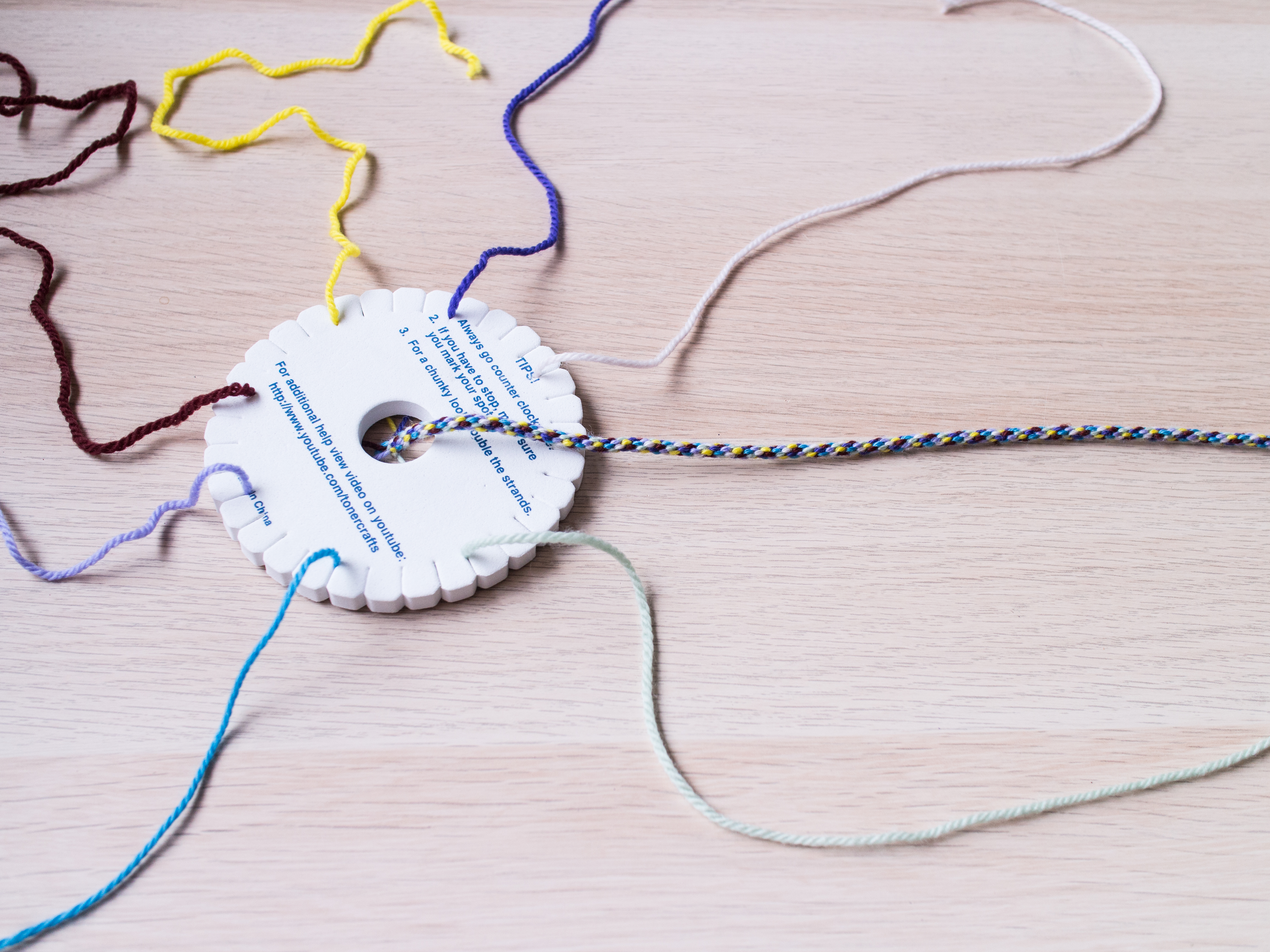Braiding
Braiding is a technique that uses coils multiple strands, in different twist directions around a solid or hollow core. Industrial braiding uses a machine called a "maypole machine" that is utterly fascinating to watch. Braiding is often used for creating sheaths around a core. What is nice about braiding is you can have a core that is a completely different material than the sheath without having to wrestle with too many different issues in tensioning. I have never worked with an industrial braiding machine, but making braided tubes by hand has opened up a lot of possibilities for experimenting with integrating many different materials.
| Structure | Ability to be Braided |
|---|---|
| Raw Fiber | no, needs to be in the form of singles first |
| Filament | yes |
| Roving & Top | yes |
| Singles | yes |
| Plied Yarn | yes |
| Braided Rope | yes |
| Knits | yes for tubular knits or narrow flat knits, you could also braid around a knit object |
| Woven | yes for narrow, flat, or tubular weaves |
| Non-Wovens | yes, if sliced or rolled into thin long pieces or rolled and integrated as core |
| Solid Objects | yes, often if integrated as a core and braided around |
Braiding with a Kumihimo Disk
Braiding machines have yet to enter the DIY marketplace (and this one is out of stock!), but we can create small samples at least using a technique called Kumihimo. Kumihimo braiding is a technique in which several lengths of yarns are braided into hollow tubes. Kumihimo templates can be used to create braids with custom textures and patterning. The templates are easy to produce in cardboard on a laser cutter at various thicknesses. During this braiding, the maker has more control over tensions than they might with techniques that spin yarns together, thus, they may be ideal for applications that require brittle materials to be integrated into the outer structure of the yarn. It is also nice because it can adapt to several different numbers of individual yarns composing the braid. If you want to braid around a core, you simple pace your core material through the hole in the center and while you are braiding, it will wrap around that core on its own. A special thank you to Pamela Liou who was the first to introduce me to Kumihimo. There are many patterns available online that allow you to create braids with different cross sections ranging from square to semi-circular.

Text Resources
Text Resources
- TBD
Documenting Braiding
Set convention unknown. The materials of each constituent material and the order in which you braided them. Often represented as a series of crosses and steps such as: https://prumihimo.com/resources/braiding-patterns/round-braid/